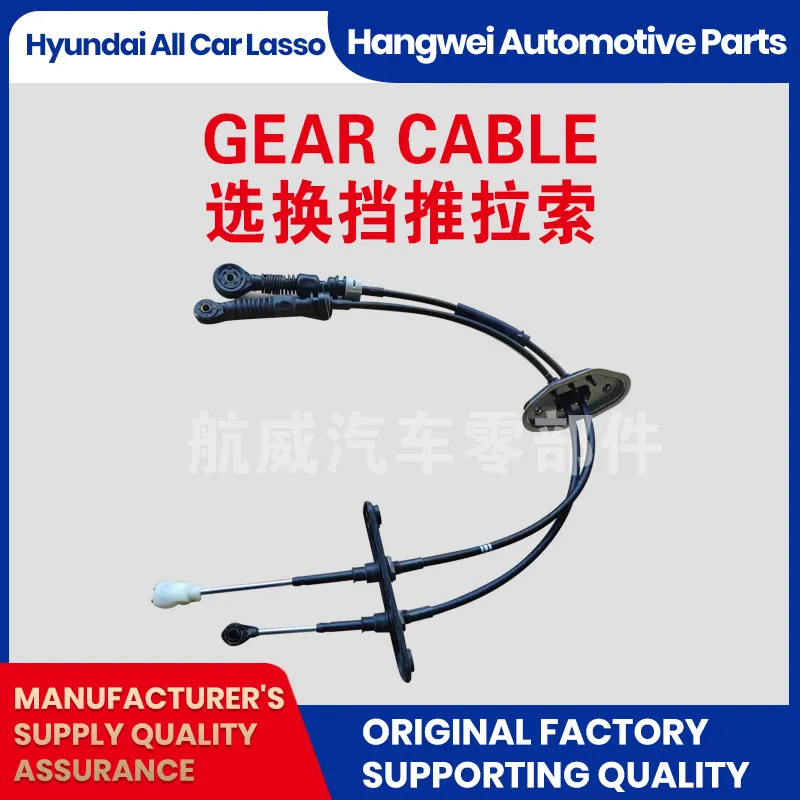handbrake cables made
Understanding Handbrake Cables Importance and Maintenance
Handbrake cables play a vital role in the safe operation of vehicles. They are essential components of the parking brake system, which ensures that a vehicle remains stationary when parked, particularly on inclines. Given their importance, understanding the function, construction, and maintenance of handbrake cables is crucial for vehicle owners and enthusiasts alike.
What Are Handbrake Cables?
Handbrake cables are steel cables that connect the handbrake lever to the rear brakes of a vehicle. When the driver pulls the handbrake lever, it tightens these cables, which in turn engages the brake components at the rear wheels. This action prevents the vehicle from rolling, proving invaluable especially when parking on slopes or uneven surfaces.
Construction of Handbrake Cables
Typically, handbrake cables are made from high-grade steel to ensure strength and durability. They are often coated with a protective layer to prevent corrosion, as they can be exposed to moisture and road salt, particularly in colder climates. The cables are usually encased in a rubber or plastic housing that helps shield them from external elements and reduce wear and tear. The end fittings of handbrake cables are designed to easily connect to the handbrake lever and the brake mechanism of the rear wheels, ensuring optimal functionality.
Signs of Wear and Problems
Like any mechanical part, handbrake cables are subject to wear and damage over time. Signs that your handbrake cables may need attention include a noticeable decrease in the effectiveness of the handbrake, unusual noises when the handbrake is engaged or released, or visible fraying of the cables. If the handbrake lever feels overly loose or requires excessive pulling to engage, these could also indicate problems with the cables.
handbrake cables made

Maintenance Tips
1. Regular Inspection Periodically check the handbrake cables for any signs of wear, fraying, or rust. Look for any visible damage, and if you find any issues, consult a professional mechanic.
2. Keep Clean Dirt and debris can accumulate on the cables and their housings, leading to premature wear. Clean the exposed parts of the cables with a soft cloth and ensure the housing is free from grime.
3. Lubrication Use a light lubricant to maintain the functionality of the cables. This will help reduce friction and prolong their lifespan. However, take care not to over-lubricate, as this could attract dirt and grime.
4. Adjusting Tension If you notice that your handbrake is not engaging properly, the tension of the cables may need adjustment. Refer to your vehicle’s manual for specific instructions on how to adjust the handbrake tension.
5. Professional Help If you are unsure about the condition of your handbrake cables, or if you encounter any problems that are beyond your expertise, it is always best to seek assistance from a certified mechanic.
Conclusion
Handbrake cables are crucial for the safe operation of every vehicle. Understanding their function, maintaining them properly, and being aware of signs of wear can help ensure that your parking brake system remains effective. Proper maintenance not only enhances safety but also prolongs the lifespan of your vehicle’s braking system. Regular inspections and timely repairs can lead to a more pleasant and secure driving experience. Whether you are a seasoned car owner or a new driver, keeping an eye on your handbrake cables is an essential part of vehicle upkeep.
-
Workings of Clutch Pipe and Hose SystemsNewsJun.04,2025
-
The Inner Workings of Hand Brake Cable SystemsNewsJun.04,2025
-
The Secrets of Throttle and Accelerator CablesNewsJun.04,2025
-
The Hidden Lifeline of Your Transmission Gear Shift CablesNewsJun.04,2025
-
Demystifying Gear Cables and Shift LinkagesNewsJun.04,2025
-
Decoding Clutch Line Systems A Comprehensive GuideNewsJun.04,2025
